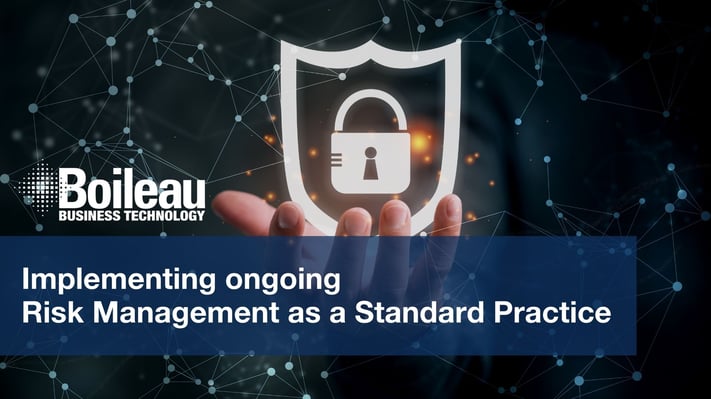
Building a strong defense is not easy since cybersecurity is not a one-and-done exercise. Your business may be safe now but could be unsafe the very next minute. Securing your business’ mission-critical data necessitates an unwavering commitment over a lengthy period. While there are several pieces to this puzzle, the most important one is ongoing risk management.
In this blog, we will walk you through cybersecurity risk assessment. By the end of it, we hope you will realise how installing cybersecurity solutions alone isn’t enough to counter cyberattacks unless you make ongoing risk management an operational standard for your business.
Understanding Cybersecurity Risk Assessment
In rudimentary terms, cybersecurity risk assessment refers to the act of understanding, managing, controlling and mitigating cybersecurity risks across your business’ infrastructure. The primary purpose of a cybersecurity risk assessment is to help key decision-makers tackle prevalent and imminent risks. Ideally, an assessment must answer the following questions:
- What are your business’ key IT assets?
- What type of data breach would have a major impact on your business?
- What are the relevant threats to your business and its sources?
- What are the internal and external security vulnerabilities?
- What would be the impact if any of the vulnerabilities were exploited?
- What is the probability of a vulnerability being exploited?
- What cyberattacks or security threats could impact your business’ ability to function?
The answers to these questions will help you keep track of security risks and mitigate them before disaster strikes. Now, imagine periodically having the answers to these questions whenever you sit down to make key business decisions. If you’re wondering how it would benefit you, keep reading.
Why make ongoing risk management a standard practice?
Making ongoing risk management an operational standard is vital, especially in today’s cyberthreat landscape where even a single threat cannot be underestimated. In one study, 30% of respondents say that real-time threat intelligence is critical for their cyber risk management. In one assessment, your business might seem on the right track but in the next one, you might spot vulnerabilities that can expose your business network to bad actors. That’s precisely why having an ongoing risk management strategy is now an integral part of standard operations for every business. Most organisations lack the capacity to transform data into insights for cyber risk assessment, threat modeling, scenario creation and predictive analysis. This underutilisation of data is one of the major roadblocks to making ongoing risk management an operational standard for businesses.
Here are seven reasons why you just can’t keep this key business decision on the backburner anymore:
1. Prevent Data Loss
Theft or loss of business-critical data can set your business back a long way, and your customers might turn to your competitors. Ongoing risk management can help you remain vigilant of any possible attempts at compromising your business data.
2. Keep threats away
An ongoing risk management strategy will help you keep threats, both prevalent and imminent, at a safe distance from your business.
3. Enhanced operational efficiency and reduced workforce frustration
As a business owner or key decision-maker of your organisation, you would be amazed how consistently staying on top of potential cybersecurity threats can reduce the risk of unplanned downtime. The assurance that hard work will not vanish into thin air will surely keep the morale of your employees high, thereby reflecting positively on their productivity.
4. Set the right tone
You must not assume that there should only be one fixed template for all your future cybersecurity risk assessments. However, to update them continuously, you need to conduct one in the first place. Hence, the first few assessments will set the right tone for future assessments as part of your ongoing risk management strategy.
5. Avoid regulatory compliance issues
By ensuring that you put up a formidable defense against cyberthreats, you will automatically avoid hassles with respect to complying with regulatory standards such as HIPAA, GDPR, PCI-DSS, etc.
Choose the right technology partner
Get the right partner to help you gauge every single cybersecurity risk your business is exposed to and protect your business continuously for a prolonged period.
Contact us to learn how we can help you mitigate cybersecurity concerns with regular risk assessments.
